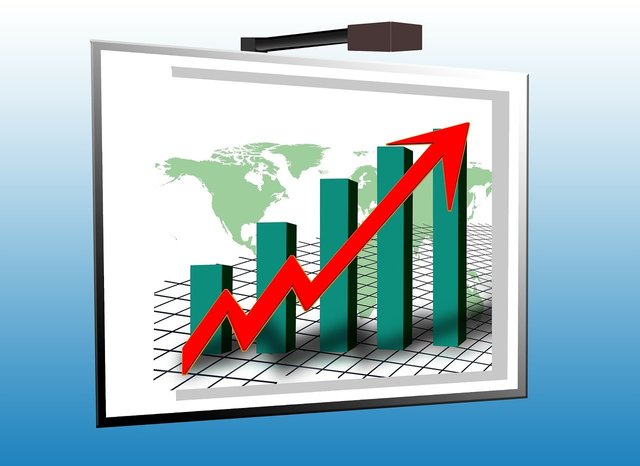Navigating the Enigma of Price and Systemic Inflation: Unmasking Economic Realities

Introduction:
Inflation, the silent force that silently erodes purchasing power, is a phenomenon central to economic discourse. Yet, traditional measures like the Consumer Price Index (CPI) and Producer Price Index (PPI) offer only a partial glimpse into the complex interplay of rising prices. This article embarks on a journey to dissect the limitations of these indices, shed light on the intricacies of systemic inflation, and explore alternative perspectives on assessing inflation's impact.
The CPI and PPI: A Narrow Lens on Inflation:
The CPI and PPI serve as the barometers of inflation, attempting to capture price changes for a basket of goods. Yet, these measures are not immune to manipulation. Through techniques like substitutions and hedonics, their accuracy comes under scrutiny. A stark example is the CPI's use of "owner equivalent rent" instead of home sales data, obscuring the true surge in housing prices.
Core vs. Headline Inflation: The Tug of War:
Core inflation, sans volatile food and energy prices, offers stability for short-term analysis. However, as monthly volatility smooths out over time, it fails to capture consistent trends. Meanwhile, headline inflation encapsulates the entire inflationary impact, yet authorities often emphasize core figures to downplay the true magnitude of rising prices.
Peering into the Abyss of Systemic Inflation:
Beyond the CPI and PPI lies the enigmatic realm of systemic inflation, the inflation that is yet to infiltrate consumer and producer prices. The Federal Reserve's monetary machinations, often referred to as "printing money," introduce new currency into the system, influencing asset values and purchasing power. Yet, quantifying this unreflected inflation remains a daunting task.
The Ripple Effect: Government-Induced Inflation's Echo:
As the government dilutes the value of the dollar, it leaves an indelible mark on the economy. The erosion of purchasing power trickles down to impact stocks, real estate, and other assets. This surreptitious wealth tax poses challenges for individuals trying to gauge true investment value amid a backdrop of obscured systemic inflation.
Illuminating the Path with Gold: A Beacon of Objectivity:
In the labyrinth of inflation measurement, gold emerges as an objective benchmark. A timeless store of value, its consistency provides an unadulterated perspective on price changes. Historical ratios between gold and nominal prices serve as guides, offering insights into the degree of inflation interwoven within those prices.
Balancing Act: Inflation's Tightrope in Economic Decision-Making:
As economies grapple with inflation's specter, accurate measurement becomes paramount. The limitations of conventional indices call for a broader understanding of systemic inflation's influence. Armed with knowledge, individuals, businesses, and policymakers can make informed decisions, mitigating the impact of rising prices on financial health.
Unveiling the Unseen: Economic Implications of Inflation:
The implications of inflation reach beyond price tags. Savings erode, purchasing power diminishes, and retirement plans face uncertainty. Businesses grapple with cost fluctuations, while policymakers navigate the delicate balance between economic growth and stability. Understanding inflation's multifaceted nature empowers proactive strategies.
Weathering the Inflation Storm: Practical Strategies for Individuals:
In an inflation-prone environment, strategic financial planning becomes a necessity. Diversified investments, hedging strategies, and considering alternative assets gain prominence. Adapting consumption patterns and building emergency funds provide a buffer against rising costs, ensuring resilience in uncertain times.
Policy Reckoning: Addressing Inflation's Impact on Society:
Governments and central banks face the challenge of curbing runaway inflation while supporting economic growth. Striking this balance requires prudent monetary and fiscal policies. Transparency in reporting and addressing systemic inflation empowers citizens and fosters a sense of economic stability.
Innovation and Economic Resilience: Lessons from Inflationary Challenges:
History has shown that economies can innovate and adapt during periods of inflation. Technological advancements, entrepreneurial endeavors, and shifts in consumer behavior can drive economic growth even in the face of rising prices. Embracing innovation becomes a catalyst for resilience.
Global Dynamics: Inflation's Cross-Border Impact:
In a globally interconnected world, inflation in one region can ripple across borders. Trade imbalances, currency fluctuations, and supply chain disruptions amplify the reach of inflation's impact. Collaborative international efforts are crucial to managing inflation's global implications.
Beyond Numbers: The Human Story of Inflation:
Behind the numbers and economic theories lies the human experience of inflation. Families adjust their lifestyles, businesses recalibrate strategies, and societies navigate changing dynamics. Recognizing and empathizing with these stories enriches our understanding of inflation's profound societal impact.
The Road Ahead: Navigating Uncertainty with Informed Choices:
Inflation remains an ever-present economic phenomenon, demanding vigilance and informed decision-making. As the world grapples with evolving economic landscapes, the lessons learned from understanding price and systemic inflation become invaluable guides for a prosperous and resilient future.
Conclusion:
The world of inflation measurement is a complex puzzle, with the CPI and PPI representing just a few pieces. The hidden force of systemic inflation dances in the shadows, defying precise quantification. As we navigate this intricate landscape, the importance of alternative benchmarks like gold becomes evident. Armed with a multidimensional perspective, individuals and stakeholders can traverse the convoluted terrain of inflation, making informed choices that safeguard financial well-being in the face of an ever-evolving economic tapestry.